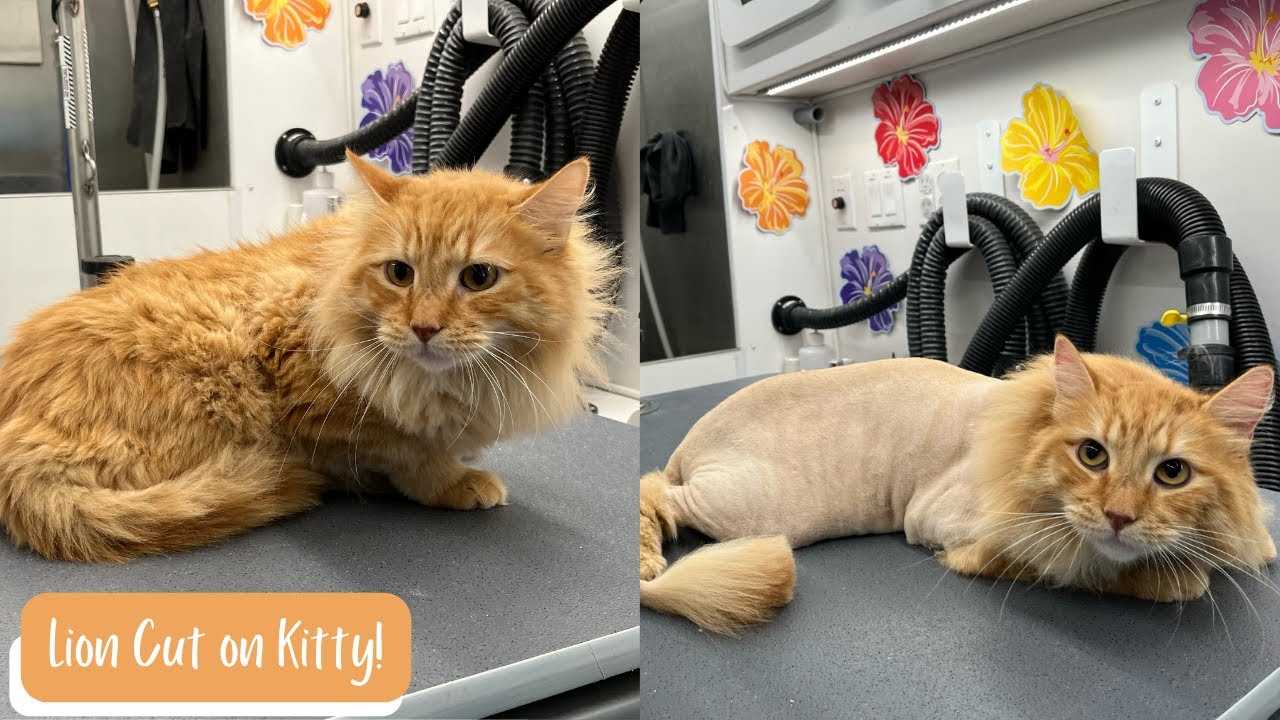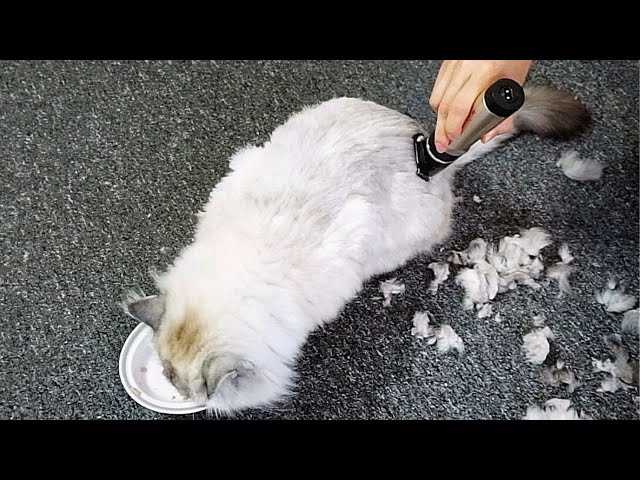



First, gather the right tools: a quality slicker brush, sharp scissors, and a comb designed for thick fur. These are your best allies in ensuring a smooth grooming experience.
Before diving in, create a calm environment. Choose a quiet space where your furry friend feels safe. This helps reduce stress and makes the process easier for both of you.
Begin by brushing thoroughly. Start at the back and work your way to the front, using gentle strokes to avoid pulling on any tangles. Regular brushing not only removes loose hair but also helps distribute natural oils, keeping the coat healthy.
If you encounter mats, carefully work them out with your fingers or the comb before cutting. Use scissors only as a last resort, and always be cautious to avoid any accidental snips to the skin.
Regular grooming sessions can help maintain a clean and manageable coat, making playtime and cuddles all the more enjoyable.
Trimming Techniques for My Furry Friends

For those with fluffy companions, a steady hand and sharp tools are key. I prefer using specialized grooming scissors with rounded tips to prevent accidents. Always start with a calm environment and ensure your buddy feels secure; this makes the process smoother.
Step-by-Step Guide
Begin with the underbelly and legs, where mats often hide. Gently lift the fur and cut small sections, working slowly to avoid pulling. Use a comb to separate tangles before snipping. As I trim, I keep an eye on the length, ensuring it remains even.
Brushing Before Grooming
Prior to any cutting, a thorough brushing is non-negotiable. This removes loose hair and tangles, making the trimming much easier. A slicker brush works wonders for reaching through the dense fur. Don’t forget to reward your pal with treats for good behavior throughout the process!
Choosing the Right Tools for Feline Grooming

For optimal grooming, select a slicker brush tailored for my fluffy coat, as it effectively removes tangles and loose fur. A wide-toothed comb is perfect for detangling stubborn knots without pulling on sensitive skin.
Invest in quality clippers designed for pet grooming; they should operate quietly to avoid startling your furry friend. Look for adjustable blades to accommodate various coat lengths and textures.
Scissors with rounded tips are essential for trimming around sensitive areas like ears and paws. This ensures safety while maintaining a neat appearance.
A good pair of nail clippers is a must. Opt for a guillotine-style or scissor-type, whichever feels comfortable for you to handle. Regular nail maintenance keeps my paws healthy and prevents painful snags.
Don’t forget to have a grooming apron or a towel handy to catch loose fur. This makes cleanup easier and keeps your space tidy.
Lastly, having high-quality pet wipes can assist in keeping my coat fresh and clean between grooming sessions. Look for hypoallergenic options to avoid skin irritation.
Preparing Your Cat for the Trimming Process
Before any grooming session, it’s crucial to create a calm environment. I prefer a quiet space away from loud noises and distractions. Ensure there are no sudden movements or loud sounds that could startle me. Soft music can help set a relaxing atmosphere.
Handling is key. Get me used to being touched in the areas where the grooming will occur. Gradually stroke my back, legs, and tail. Use treats to create positive associations. This makes a significant difference; I’m more likely to cooperate if I feel safe and loved.
Bathing before cutting is optional. Some felines enjoy a light bath; others may not. If I’m one of those who likes it, ensure to dry me thoroughly before starting. Wet fur can make the process more complicated.
Before proceeding, check my fur for any mats or tangles. Gently work through these with your fingers or a wide-toothed comb. This reduces discomfort during the grooming process.
| Preparation Steps | Details |
|---|---|
| Create a Calm Environment | Choose a quiet space, free from distractions and loud noises. |
| Gentle Handling | Familiarize me with touches in grooming areas using treats. |
| Optional Bathing | Consider a bath if I’m comfortable; dry thoroughly before starting. |
| Check for Mats | Gently remove tangles with fingers or a comb before grooming. |
Finally, gather all your tools in advance. Having everything ready makes the experience smoother and quicker, ensuring I remain calm throughout.
Step-by-Step Guide to Grooming Your Feline Companion’s Coat
Begin with a calm environment. Choose a quiet space where I feel safe and relaxed. You can place a non-slip mat or towel on a flat surface to help me stay steady.
1. Getting Started
- Ensure I’m comfortable. Pet me gently and speak softly.
- Use a brush designed for my type of fur. Start with a wide-toothed comb to detangle any knots.
2. Working Through the Fur
- Section my fur into manageable parts. This helps prevent overwhelming me.
- Begin with the back and sides. Use long, smooth strokes to remove mats.
- Move to my legs and belly. These areas may be sensitive, so approach gently.
- Finally, groom my tail and face. Use a soft brush for delicate areas.
After completing the grooming, offer a treat as a reward. This builds positive associations with the grooming process.
Handling Matting and Tangled Fur
First, gently examine the affected areas on my coat. For mats, use a detangling spray to ease the process. Apply it directly to the tangled fur and let it sit for a minute. This will help loosen the knots.
Next, with a wide-toothed comb, start at the edges of the mat, working your way inwards. Hold the base of the mat to prevent pulling on my skin. If the knot is stubborn, use your fingers to gently work it apart.
For larger mats, you might need to carefully cut them out. Use blunt-tipped scissors and be extra cautious to avoid my skin. Slide a comb underneath the mat to create a protective barrier.
Regular grooming is key to preventing future tangles. Aim for at least once a week. This keeps my fur smooth and less prone to matting.
If you’re looking to capture my best side during grooming sessions, you might want to consider the best camera under 1000 for long range photography digital camera. It’s a great investment for those picture-perfect moments!
Always reward me with treats and cuddles after grooming. This helps create a positive association with the process and makes future sessions easier.
Post-Trimming Care for Your Cat’s Coat
After a grooming session, it’s crucial to maintain my coat’s health and appearance. Here are specific steps to follow:
- Regular Brushing: Brush my fur at least three times a week. This helps remove loose hairs and prevents tangles from forming again.
- Hydration: Ensure I have access to fresh water. Hydration supports skin health and keeps my coat looking shiny.
- Moisturizing Products: Consider using a cat-safe conditioner or coat spray. This can enhance softness and manageability.
- Balanced Diet: Feed me high-quality food rich in omega fatty acids. This promotes a healthy coat from the inside out.
- Monitor Skin: Keep an eye on my skin for any signs of irritation or dryness after grooming. If something seems off, consult a vet.
- Comfortable Environment: Create a cozy space for me to relax post-grooming. A safe and pleasant atmosphere helps reduce stress.
- Interactive Play: Engage me in playtime to distract from any post-grooming anxiety. It keeps me active and happy.
Lastly, if you’re thinking about enriching my life with a secure area outdoors, consider a catio for cats. It provides a safe space to enjoy fresh air while keeping my coat clean and healthy.









